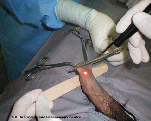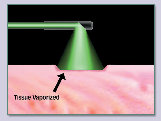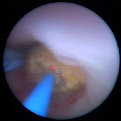MBBS, FRCS, FICS, FAMS (Urology)
Senior Consultant & Board Certified Urologist (Singapore)
Gleneagles Medical Centre #09-18, Singapore 258499
Tel: +65 647 52512
S H HO UROLOGY AND LAPAROSCOPY CENTRE
Cutting Edge Urology Care with Compassion
Laser surgery in urology
Common Conditions
Laser is an acronym for Light Amplification by the Stimulated Emission of Radiation. Albert Einstein proposed the concept of stimulated
emission of radiation but it was not until 1960 that T.H. Maimen produced the first visible light laser.
Recent advances in lasers and fiberoptics make them ideally suited to travel through the smallest tube or cavity in the human body. With widespread use of small-caliber endoscopic instruments, urology has been drastically and positively influenced by this technology, perhaps more so than any other surgical discipline..
Urology Procedures
Laser Surgery
Opening Hours:
Monday - Friday
9am to 5pm
Saturday
9 am to 1 pm
Sun / Public Holiday
Closed
How does laser work in surgery ?
Urologist use lasers for 2 different effects—thermal and mechanical. The most common utilization is the thermal effect, whereby light
energy is absorbed and transformed into heat. This lead to tissue protein changes at 42-65°C, the shrinkage of blood vessels at 70°C,
cell dehydration at 100°C and finally tissue vaporization at 300°C.
The mechanical effect results, for example, when a very high power laser is directed at a urine stone and a column of electrons is freed rapidly at the stone surface. This creates a plasma bubble that swiftly expands and acts like a sonic boom to disrupt and break the stone.
Our centre specializes in laser surgery and we use
laser in three areas: circumcision, prosate and stone surgery.
Surgical videos
Laser circumcision
Laser prostate surgery
Laser stone surgery






Laser circumcision uses the thermal effect of a CO2 laser beam to remove the excess foreskin. The CO2 laser emits in the invisible
far infrared portion of the electromagnetic spectrum. It usually is coupled with a visible helium-neon beam for guidance.
Its
beam is highly absorbed by water and water-dense tissues are vaporized to a superficial depth of less than 1 mm. Heat conduction results
in tissue protein changes, effectively sealing blood vessels along its path. The beam is delivered using an articulating arm with
mirrors and a hand piece.
The laser beam cuts as well as controls bleeding from the skin edges, resulting in a very tidy wound.
This technique allows exact proportions of skin and mucous membrane to be removed. Recovery is usually uncomplicated and infection
is uncommon.
Laser prostate surgery uses the thermal effect to vaporize enlarged prostate tissue. We perform Photoselective Vaporization
ofProstate using a green light laser. This laser, also known as a potassium-titanyl phosphate (KTP) laser, yields a green visible
light beam of 532 nm.
It is a form of minimally invasive endoscopy therapy. It uses a unique high power laser energy, which is
selectively absorbed by blood (hemoglobin) within the prostate tissue. The laser energy is transformed in to thermal energy, leading
to vaporization and removal of the tissue. This results in an open the channel for passage of urine from the bladder.
As
the laser energy is selectively absorbed by blood, the laser seals blood vessels beneath the area of vaporization, which results in
substantially less bleeding, compared to traditional transurethral resection of prostate (TURP) surgery. There are much fewer side
effects and recovery is much quicker.
Laser stone surgery uses the mechanical effect to break all types of stones in the kidney or ureter. It uses a Holmium:YAG (Ho:YAG)
that emits a beam of 2150 nm. The laser energy is delivered by a silica fiber in a pulsed manner. Using a thermo mechanical action,
it superheats water, which heavily absorbs light energy at this wavelength. This creates a vaporization plasma bubble at the tip of
the fiber that expands rapidly and shatters the stone in contact. The absorption depth in tissue is only 1-2 mm, minimizing damage
to the surrounding structures.
The laser fiber is introduced via a fine surgical instrument called an ureteroscope, which is
placed into the urine passage tube. The ureter stone is identified and broken down by laser by direct contact. Fragmentation with
laser is very precise.
Make an appointment by email or Call us at +65 647 52512
